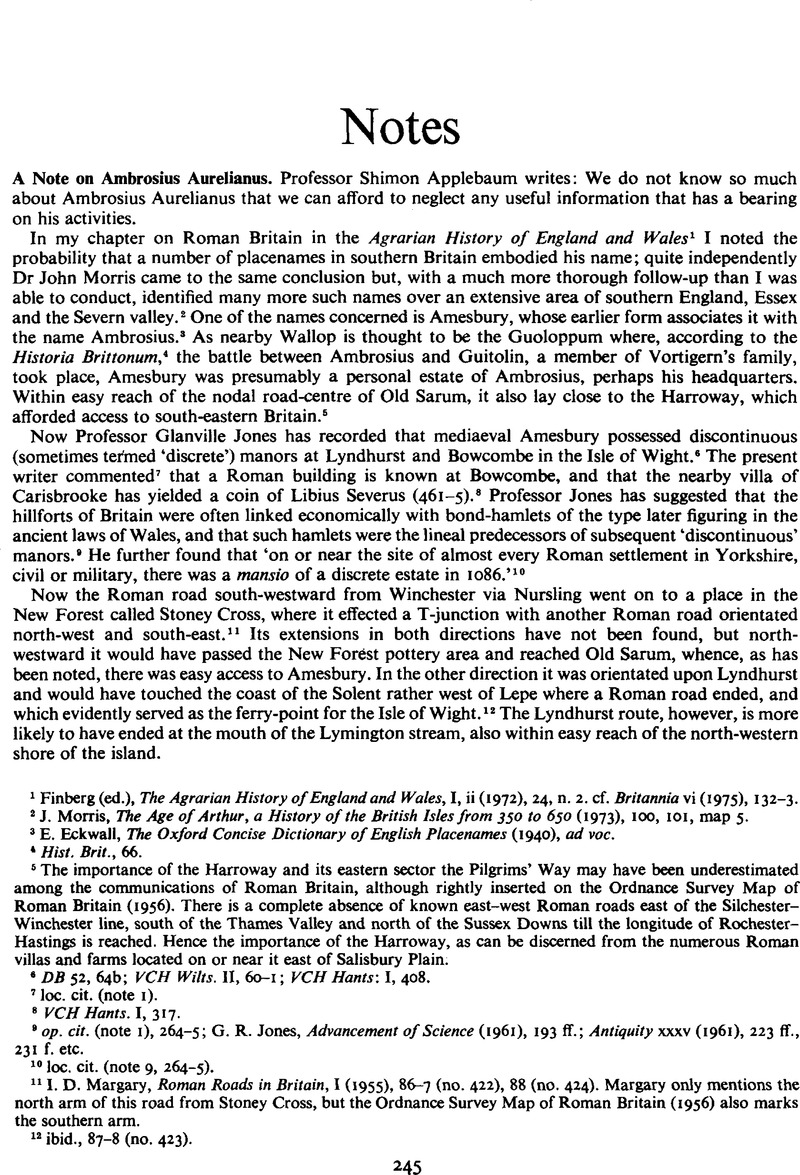Article contents
A Note on Ambrosius Aurelianus
Published online by Cambridge University Press: 09 November 2011
Abstract

- Type
- Notes
- Information
- Copyright
- Copyright © Shimon Applebaum 1983. Exclusive Licence to Publish: The Society for the Promotion of Roman Studies
References
1 Finberg, (ed.), The Agrarian History of England and Wales, I, ii (1972), 24, n. 2. cf.Google ScholarBritannia vi (1975), 132–3.Google Scholar
2 J. Morris, The Age of Arthur, a History of the British Isles from 350 to 650 (1973), 100, 101, map 5.
3 E. Eckwall, The Oxford Concise Dictionary of English Placenames (1940), ad voc.
4 Hist. Brit., 66.
5 The importance of the Harroway and its eastern sector the Pilgrims' Way may have been underestimated among the communications of Roman Britain, although rightly inserted on the Ordnance Survey Map of Roman Britain (1956). There is a complete absence of known east-west Roman roads east of the Silchester-Winchester line, south of the Thames Valley and north of the Sussex Downs till the longitude of Rochester-Hastings is reached. Hence the importance of the Harroway, as can be discerned from the numerous Roman villas and farms located on or near it east of Salisbury Plain.
6 DB 52, 64b; VCH Wilts. II, 60-1; VCH Hants: I, 408.
7 loc. cit. (note 1).
8 VCH Hants. 1,317.
9 op. cit. (note I), 264–5; G. R. Jones, Advancement of Science (1961), 193 ff.; Antiquity xxxv (1961), 223 ff., 231 f. etc.Google Scholar
10 loc. cit. (note 9, 264–5).
11 Margary, I. D., Roman Roads in Britain, I (1955), 86–7 (no. 422), 88 (no. 424). Margary only mentions the north arm of this road from Stoney Cross, but the Ordnance Survey Map of Roman Britain (1956) also marks the southern arm.Google Scholar
12 Ibid., 87–8 (no. 423).
13 See M. Fulford's map in Britannia iv (1973), 161, fig. 1. Fulford (p. 163) records finds of coins of Julian and Valens from the enclosure.Google Scholar
- 1
- Cited by


